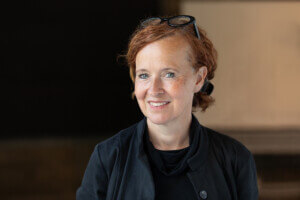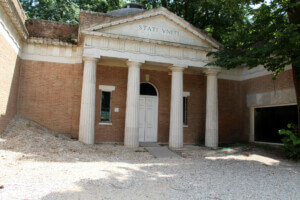As a part of Detroit’s Wasserman Projects exhibition, Desire Bouncing, a panel discussion addressed the future of architecture and art in Detroit. The panel was moderated by Reed Kroloff, principal of Jones Kroloff and former director of Cranbrook Academy of Art and Art Museum.
The panel included exhibiting artist Alex Schweder, associate curator at MoMA’s Department of Architecture and Design; Sean Anderson, architectural critic; Cynthia Davidson, Venice Biennale U.S. Pavilion co-curator; and Mitch McEwen, assistant professor of Architecture at Taubman College of Architecture and Urban Planning at University of Michigan.
Detroit is physically changing. Some of its architectural treasures and thousands more of its abandoned homes have been demolished. But now that Detroit is undergoing the slow process of rebuilding, what kind of architecture will replace it?
This and other questions were discussed among an expert panel of architects and critics that gathered last Friday at Wasserman Projects, a gallery and event space in a renovated fire truck maintenance facility in Detroit’s Eastern Market. Around 50 guests attended the panel discussion, called “Architecture By Any Means Necessary.”
Kroloff began by asking the panelists, “What are things architecture can do beyond creating a city environment?”
“Structures are receptacles for stories, for meanings,” said Alex Schweder, an artist who often combines performance and architecture in his work. “The structures in Washington D.C. are a manifestation of stories we tell about our country.”
“Buildings can perform things we never thought were possible,” said Mitch McEwen, a founding partner at A(n) Office and Principal of McEwen Studio.
Her example of Le Corbusier’s Carpenter Center in Cambridge, Massachusetts, which changed her conception of architecture, lead to an argument about the interaction between a building and its visitors.
Cynthia Davidson described her distaste for Detroit’s Renaissance Center, the headquarters of General Motors, often criticized for its confusing walkways and lack of synergy with downtown. “[Designer John] Portman makes you realize how controlling architecture can be,” she said.
In response to a question about what new architecture in Detroit should do, Schweder advocated architects and city managers give up some control. “Our roles can be collaborative with client and users,” he said. “People want voice and agency in the look and use of their city.”
The discussion took a turn towards political issues and actual implementation of these ideas.
Sean Anderson, acknowledged the difficulty Schweder’s proposal. “History is often not recognized by developers that come and rebuild cities.”
During the audience question portion of the panel, someone mentioned that vast areas of Detroit that have no architecture, but “only the ghosts of architecture.” He then wondered if this “absence” was worth preserving.
“Detroit is a city of single family homes,” answered McEwen. She felt that memorializing vacancy was the wrong approach. “I hope the city rebuilds, but with respect for the logic of the single family home.”
Desire Bouncing will be on show through April 9th at the Wasserman Projects at 3434 Russell Street, #502, Detroit, Michigan 48207.










